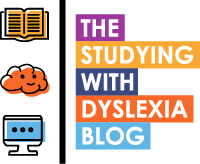As part of Neurodiversity Celebration Week, it’s important to raise awareness about dyspraxia, also known as Developmental Coordination Disorder (DCD). Dyspraxia is a condition that affects movement, coordination, and motor skills, making many everyday tasks challenging for individuals. It is a neurodevelopmental disorder that is not linked to intelligence but can impact a person's ability to perform physical tasks and activities that require coordination.
At Studying with Dyslexia, we believe in providing resources and creating a supportive environment for individuals with neurodivergent conditions, including dyspraxia. Understanding the challenges and needs of students with this condition is essential in offering the right strategies for success.
Areas Affected by Dyspraxia
Dyspraxia can affect a range of physical and motor skills, including:
Handwriting and fine motor control: Struggles with writing tasks, such as holding a pen or forming letters clearly.
Coordination and balance: Difficulty with tasks that require motor coordination, such as walking, running, or handling objects smoothly.
Spatial awareness and organisation: Problems with judging distances or understanding spatial relationships, which can affect both physical and organisational tasks.
Speech and articulation: Some individuals with dyspraxia may experience challenges with clear speech or articulation.
Planning and executing movements: Difficulty with organising and carrying out coordinated movements, such as tying shoelaces or using tools.
Dyspraxia can also affect social interactions, confidence, and emotional regulation. The frustration of struggling with physical tasks can lead to low self-esteem, anxiety, or social withdrawal. However, with the right support, students with dyspraxia can thrive and engage confidently in their learning environments.
Effective Support Strategies for Dyspraxic Students
Every individual with dyspraxia is different. Their challenges and strengths will vary, so it’s essential to treat them as individuals and provide tailored support to meet their specific needs.
Many dyspraxic students may find tasks requiring coordination and motor planning particularly difficult. Structured support, clear instructions, and alternative strategies can help improve their ability to engage in activities and develop their confidence. Here are some strategies to consider:
Use larger grips on writing tools: Students with dyspraxia may struggle with handwriting, so larger grips or adapted pens can help them gain better control. Encouraging typing as an alternative to handwriting can also be beneficial.
Provide clear, step-by-step instructions: Breaking down tasks into manageable steps and providing visual aids can make it easier for dyspraxic students to understand and follow instructions.
Allow extra time for physical tasks: Tasks that require coordination or physical movement may take longer, so allowing extra time can reduce frustration and help students complete tasks more successfully.
Encourage active play and physical activities: Engaging students in physical activities, such as balance exercises or sports, can help improve their coordination in a fun, supportive way.
Use assistive technology: Technology can play a key role in helping students with dyspraxia manage their work and organisation. Tools such as voice-to-text software or organisational apps can help reduce the impact of motor difficulties on academic tasks.
By creating an environment that acknowledges the unique challenges of dyspraxic students and providing the right support, we can empower them to succeed and feel confident in their abilities.
Thank you for reading! If you found this article helpful and want to stay updated with the latest insights on dyslexia and neurodiversity, please sign up for our newsletter. To support our work and help us keep the blog running, consider supporting the blog by clicking here.
